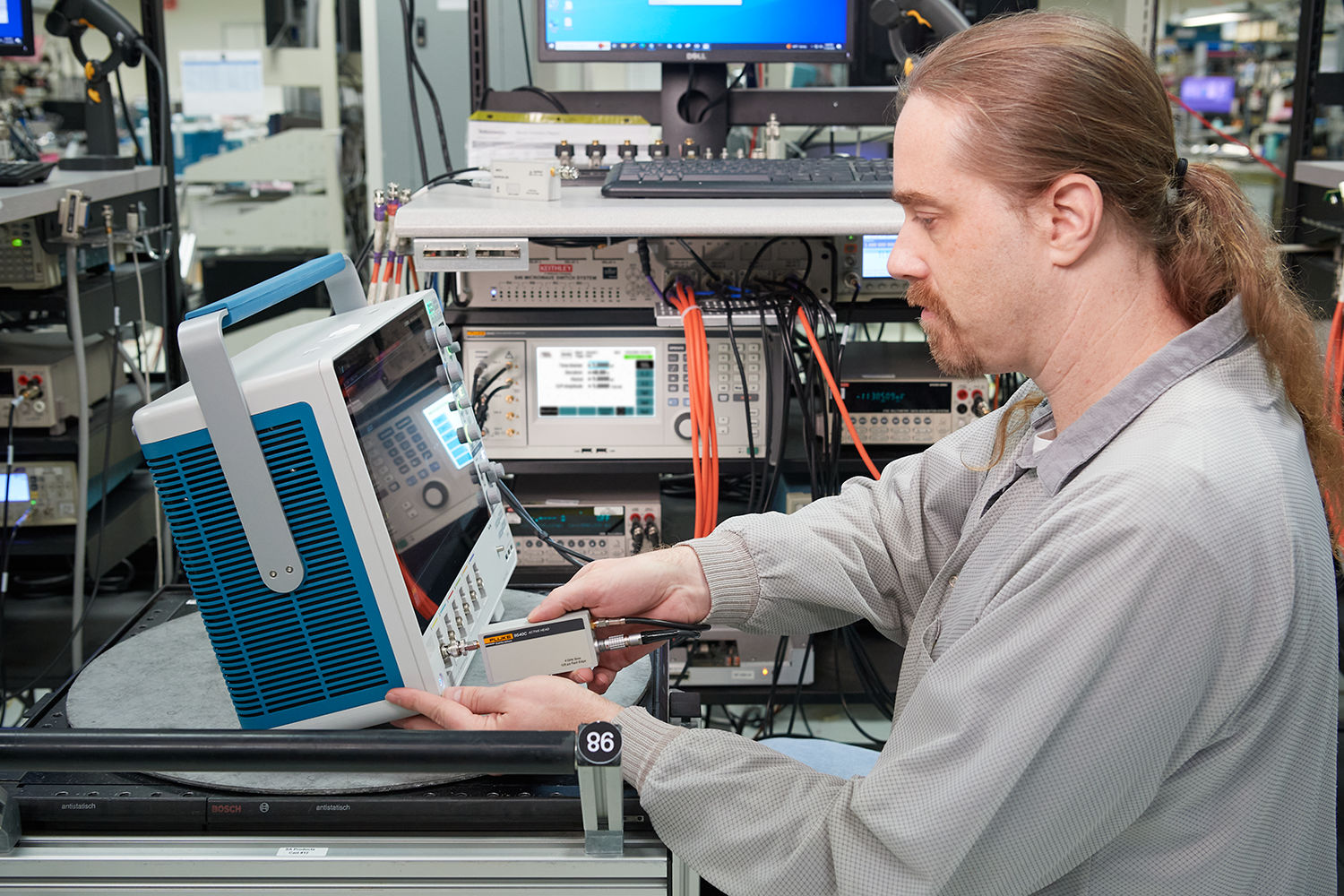- Other Fluke companies:
- Fluke
- Fluke Biomedical
- Fluke Networks
- Fluke Process Instruments
How to calibrate an oscilloscope for phasing
Calibrating X-Y Phasing
X input
Depending on the type of oscilloscope, the X input will be applied either via the External Trigger connector, or via Channel 1, with suitable switching. In either case, the same signal of 50 mV, 50 kHz will be applied to both X and Y inputs.

a. Initial setup
The oscilloscope controls are calibration set as follows:
- Vertical mode: X-Y
- Sensitivity: 5 mV/div, both channels
- Ch 1 or X: AC coupled
- Ch 2 or Y: Grounded
- Vertical mode: X-Y
- Vertical position: Central
- Horizontal position: Central
Note: In X-Y phasing tests on a DSO, the highest possible sampling rate is employed. However, the display of captured Lissajous figures may show interrupted segments due to the storage length limitation, until the frequency of the test signal is sufficiently high to capture a complete cycle.
b. Trace acquisition
The display intensity is adjusted until a horizontal trace is just visible (should be 10 divisions long). After the X and Y position controls have been used to center the trace, the intensity and focus controls are adjusted for best display.
c. Phasing check
The common input signal is reduced until the trace is 8 divisions long. Channel 2 (or Y) input mode is switched to DC, and the X and Y position controls are used to center the (now sloping) trace. If the X and Y channels do not introduce any phase error, then the center of the trace will pass through the origin. Phase error between X and Y channels will cause the sloping trace to split into an ellipse, which for small phase errors will be apparent only close to the origin. The trace separation at the origin, along the center horizontal graticule line, should be not greater than 0.4 division for a commonly specified phase shift of 3 degrees.
Return to previous articles
- Home
- Products
- New Products
- Electrical Calibration
- RF Calibration
- Data Acquisition and Test Equipment
- Temperature Calibration
- Humidity Calibration
- Pressure Calibration
- Flow Calibration
- Process Calibration Tools
- Calibration Software
- Service and Support
- All Calibration Instruments
- Handheld Test Tools
- Purchase Info
- News
- Training and Events
- Literature and Education
- Service and Support
- About Us


